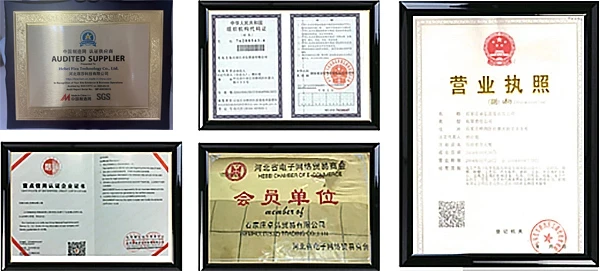



bisulfate de sodium ph
The Role of Sodium Bisulfate and Its pH Relevance
Sodium bisulfate, or sodium hydrogen sulfate, is a hygroscopic compound with the chemical formula NaHSO₄. It is often utilized in various industries, from food processing and household cleaning to water treatment and chemical manufacturing. As a versatile compound, sodium bisulfate offers a myriad of applications, one of which is its role in pH adjustment. Understanding its properties, particularly its pH, is crucial for both its effective application and safety considerations.
Sodium Bisulfate and pH
Sodium bisulfate is an acidic salt, providing significant acidity when dissolved in water. This property makes it an effective agent for lowering pH levels in various solutions. The pH of sodium bisulfate solutions typically ranges from 1.5 to 2.5, depending on concentration. This high acidity makes sodium bisulfate an ideal choice for applications such as swimming pool maintenance and industrial processes where pH correction is necessary.
In swimming pools, for instance, maintaining an optimal pH level between 7.2 and 7.8 is crucial for the effectiveness of chlorine sanitizers. When the pH rises above this range, sodium bisulfate can be added to lower it, thereby enhancing the sanitizer's efficacy. Similarly, in various industrial processes, such as textile manufacturing and metal cleaning, pH control is vital for ensuring product quality and efficiency.
Applications of Sodium Bisulfate
1. Water Treatment Sodium bisulfate acts as a pH reducer in water treatment applications. High pH levels can hinder the effectiveness of water treatment chemicals, making it necessary to lower the pH to optimal levels for effective disinfection and removal of contaminants.
2. Food Processing In the food industry, sodium bisulfate serves as a food additive. It helps to regulate acidity, enhance flavors, and act as a preservative. However, it is essential to monitor its concentration to ensure compliance with food safety regulations and standards.
bisulfate de sodium ph

3. Cleaning Products Sodium bisulfate is often included in household cleaning products due to its acidic properties. It can effectively remove mineral deposits and rust stains, making it a common ingredient in toilet bowl cleaners and drain cleaners.
4. Laboratory Use In analytical laboratories, sodium bisulfate is employed to prepare acidic solutions. Its ability to provide a consistent pH level is vital in many experimental procedures where pH-sensitive reactions occur.
Safety and Handling
While sodium bisulfate is an effective and widely used chemical, it does require careful handling. Due to its acidic nature, it can cause skin irritation and damage to mucous membranes upon contact. Therefore, appropriate safety measures, including the use of gloves and protective eyewear, should be adhered to during handling and application.
It’s also important to ensure proper storage. Sodium bisulfate should be kept in a cool, dry place, away from incompatible substances like strong bases and metals, which it can react with adversely. Following these guidelines helps mitigate risks associated with its use.
Conclusion
Sodium bisulfate is a valuable chemical with significant applications across various industries, primarily due to its pH-altering properties. Its ability to lower pH levels makes it indispensable in swimming pool maintenance, water treatment, food processing, and cleaning products. However, acknowledging the safety considerations associated with its use is equally important. By understanding both the benefits and precautions related to sodium bisulfate, consumers and industries can utilize this compound effectively to enhance their processes and ensure safety. As ongoing research continues to unravel new applications and benefits, sodium bisulfate remains a compound of great relevance in a chemically-driven world.
-
Why Sodium Persulfate Is Everywhere NowNewsJul.07,2025
-
Why Polyacrylamide Is in High DemandNewsJul.07,2025
-
Understanding Paint Chemicals and Their ApplicationsNewsJul.07,2025
-
Smart Use Of Mining ChemicalsNewsJul.07,2025
-
Practical Uses of Potassium MonopersulfateNewsJul.07,2025
-
Agrochemicals In Real FarmingNewsJul.07,2025
-
Sodium Chlorite Hot UsesNewsJul.01,2025










